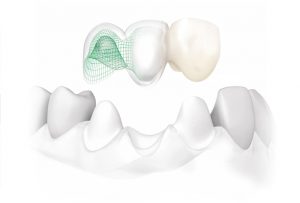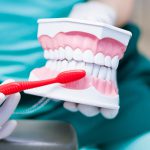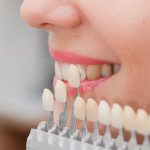 Zirconium Dental Crowns
Zirconium Dental Crowns
Zirconium crowns represent the highest quality achieved so far in dentistry in terms of aesthetics, durability, tissue compatibility, and natural appearance.
In aesthetic dentistry, there is a growing shift away from metal-based porcelains. In this system, which includes all the desired features such as biological compatibility, natural appearance, aesthetics, and mechanical strength, a white alloy called “zirconium” is used instead of metal as the substructure.
We safely prefer zirconium-based porcelains because they are aesthetic enough to be used on front teeth and durable enough to be used on back teeth. These systems significantly improve the quality of life for individuals.
Uses of Zirconium
-
In cases of advanced discoloration (such as from antibiotics or fluoride) where whitening methods are ineffective
-
In individuals whose teeth have previously been cut
-
To close gaps between teeth (diastema closure)
-
In patients with existing metal-supported bridges or crowns
-
For correction of broken teeth
-
For restoration of old fillings that are discolored or structurally compromised
-
For correcting crowded or misaligned teeth (as an alternative to orthodontic treatment)
-
In teeth with excessive substance loss where filling is not possible
Advantages of Zirconium Crowns
-
Due to its insulating properties, sensitivity to hot and cold does not develop.
-
Zirconium transmits light, creating an appearance very similar to natural teeth. Even in well-made metal-supported porcelain crowns, a certain dullness and artificial look can be noticed. For this reason, zirconium is especially preferred for front teeth.
-
Metal-supported porcelains can appear as a dark void in certain lighting conditions. In contrast, zirconium reflects light just like natural teeth.
-
Metal-supported porcelain crowns and bridges are mechanically bonded to the tooth. Zirconium is both mechanically and chemically bonded, providing significantly higher retention.
-
Since there is no metal in the substructure, there is no dark line at the gum line of the crown, resulting in a more aesthetic appearance.
-
The porcelain surfaces are extremely smooth, minimizing staining from factors like smoking and reducing tartar build-up.
-
It does not discolor due to external factors such as coffee, tea, or cigarettes.
-
It is a healthy material that does not cause taste disturbances, gum problems, or bad breath.
-
Discoloration and gum pressure caused by previous metal-supported crowns completely disappear when replaced with zirconium crowns, resulting in a natural and aesthetic look.
-
When gum recession occurs, zirconium crowns maintain their aesthetic appearance, while metal-supported crowns often create an unsightly line where they meet the tooth.
-
There is no risk of allergic reaction to metals like nickel, which may be present in metal-based crowns.
-
It is perfectly compatible with the body and can be safely used in individuals with existing or potential gum disease. It is highly compatible with gum tissue and, if proper oral hygiene is maintained, does not cause periodontal issues.
Application of Zirconium Crowns
First, anesthesia is administered and the teeth are prepared, followed by taking impressions. To prevent the prepared teeth from appearing empty until the next stage, temporary crowns are made and bonded to the teeth. These also prevent sensitivity.
In the second stage, the substructure prepared in the laboratory is tried in to check its fit with the gum tissue.
In the final stage, an aesthetic try-in is performed. Before bonding, one or two appointments are used to check the harmony of the final crowns—prepared in the chosen shade—with the teeth and facial structure. The entire process is usually completed within 7–10 days.


